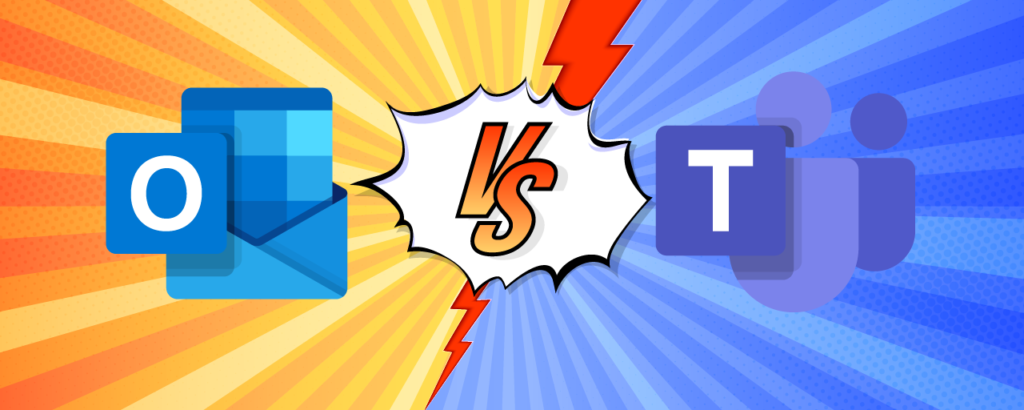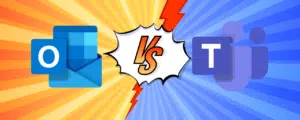By Heather Severino and J. Peter Bruzzese
In the 1980’s if you wanted to collaborate on a document, you would save it to a floppy disc and walk it (aka sneaker-net) to your colleagues. Computer networks, the Internet, e-mail… these would all improve the ability to collaborate faster into the 1990’s. But there were drawbacks to those methods. Take that document you are working on with your colleagues. Email it back and forth a few times and you start to lose track of which version is the latest unless you all update the file name with each revision. You now have documents in your Inbox that end with a barrage of initials and numbers from all the players who have had their hands on reviews and edits. In 1999 this would be considered modern and productive. These days, not so much.
Moving the same use case over to 2021, there is a newer, better, more efficient way to accomplish those activities by leveraging real-time communication and collaboration through Microsoft Teams. Using a Teams chat with the key players, or by creating a specific team site for the project itself, you can add that document into a unified collaboration medium. Underpinned by SharePoint and OneDrive you can now collaborate on that document in real-time (or on your time) through Word, Excel, PowerPoint, or OneNote web apps right within Teams. Versioning is handled behind the scenes. You don’t need to ask your colleague if they made updates because you can see for yourself by viewing who worked on the file last before you even open it.

So, what are we saying? Are we saying email is dead? Are we saying it is the anti-productivity tool of the 21st century? Not quite. We are calling for a necessary mind shift on purpose. A transition to a new behavior for more efficient collaboration. Email continues to be a great tool for communication (external communication, legacy document collaboration scenarios, essential compliance/discovery communication). But real-time communication (i.e., private chat, channel conversations with @mentions, audio/video calls, instant meetings, document collaboration) through Teams is where you will find true productivity in the modern workplace.
If that’s true, then every time your colleagues use email instead of using Teams they are being less productive. Let’s say that again: Every time your colleagues use email… instead of using Teams and real-time collaboration… they are less productive.
Microsoft Certified Trainer and Office Apps/Services MVP, Heather Severino says, “It’s important to identify the early adopters of technology and help them become the Microsoft 365 adoption champions. This should be a key focal point of the change management team at every organization during the rollout of Microsoft 365. Those tech champions help determine real world workflows for their business units, which makes associated training efforts more relevant. And those champions become the go-to Subject Matter Experts for their own departments. They become the centerpiece for help and advice pertinent to the teamwork they promote.”
It’s not enough to just give people the technological tools to collaborate. They need to be trained on how to use those tools and assisted to evolve beyond the old way of working. And it’s not enough for a few employees to learn and embrace this new world, it has to be all inclusive. Otherwise, when a colleague sends that email with the document to an enlightened worker, they may feel inclined to just go with it. When instead they should be helping their colleague to evolve as well. A top-down embracing of the mind shift, combined with training the whole company is the only way to get the ship to turn.
And it will turn. You should be able to see the shift happening within your organization, visibly, as well as through data points that show the reduction in email traffic (which is a healthy reaction in this case) while other communication metrics (calls, meetings, shared documents) increase. If you haven’t checked out MyAnalytics yet, you should! It helps workers and managers gain insights into how a knowledge worker spends their time. Track the number of meetings, the time spent in meetings, and set a personal goal to reduce the number of hours in meetings and optimize tasks to make them more efficient.
And that’s the overall goal. When tools like email, that were once helpful, become harmful and get in the way of collaboration and productivity it is important to re-evaluate the use of those tools. It is important to push for newer and more productive methods of communication, collaboration, and cooperation. And the only way to accomplish this is with top-down training and a complete buy-in to the value of modern solutions like Teams. It’s the optimal way to drive your organization forward as part of your digital transformation.
About the Authors:
Heather Severino, 4-time awarded Microsoft MVP for Office Apps and Services (with a focus on Teams, SharePoint, OneDrive and OneNote technologies), has 25 years of experience in the technology and learning industries.
J. Peter Bruzzese, 8-time awarded Microsoft MVP for Exchange and Office Apps and Services, is a co-founder and Chief Content Officer for ClipTraining. J. Peter is an internationally published tech author and journalist, as well as a global speaker on email cyber security.
